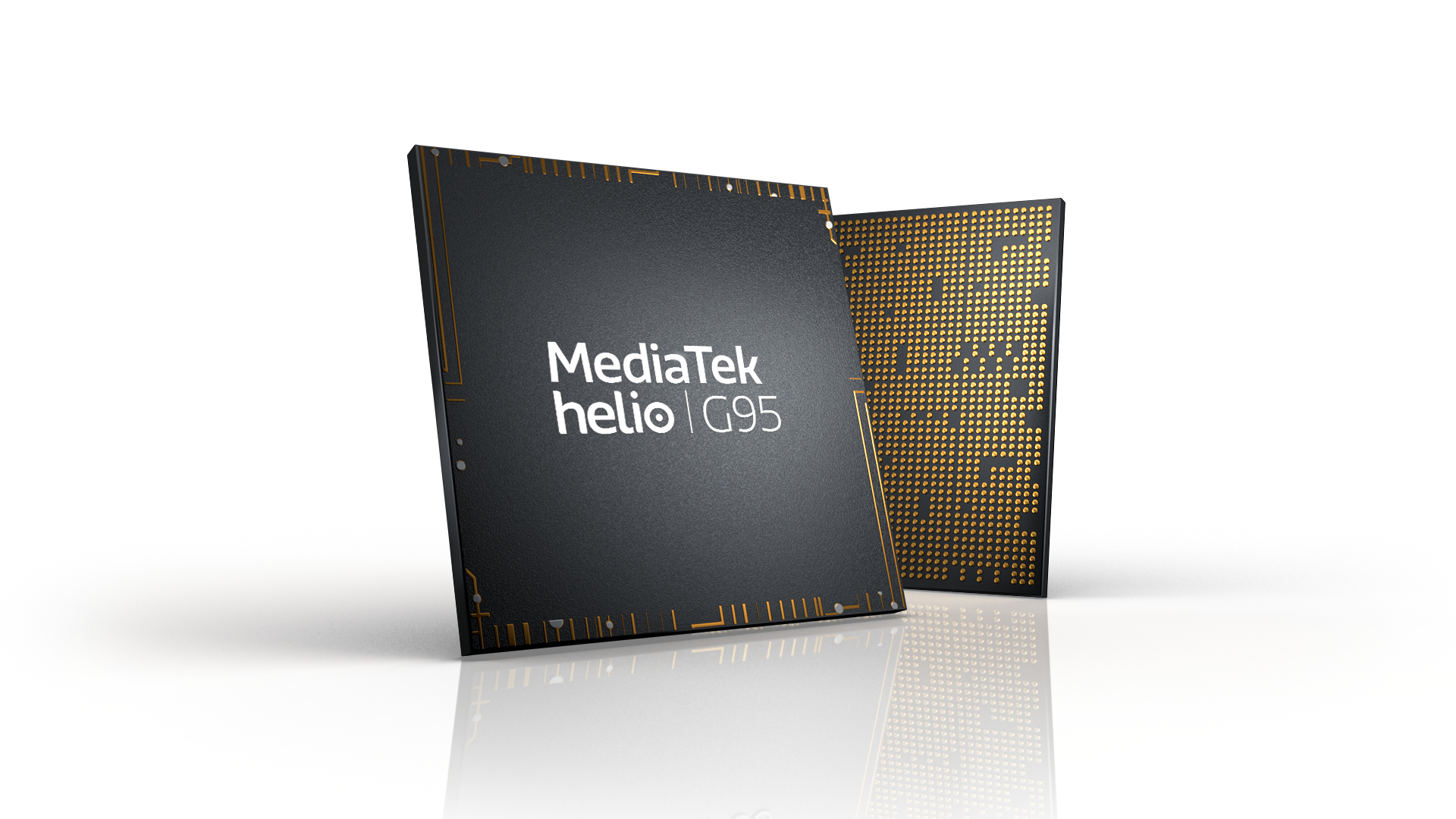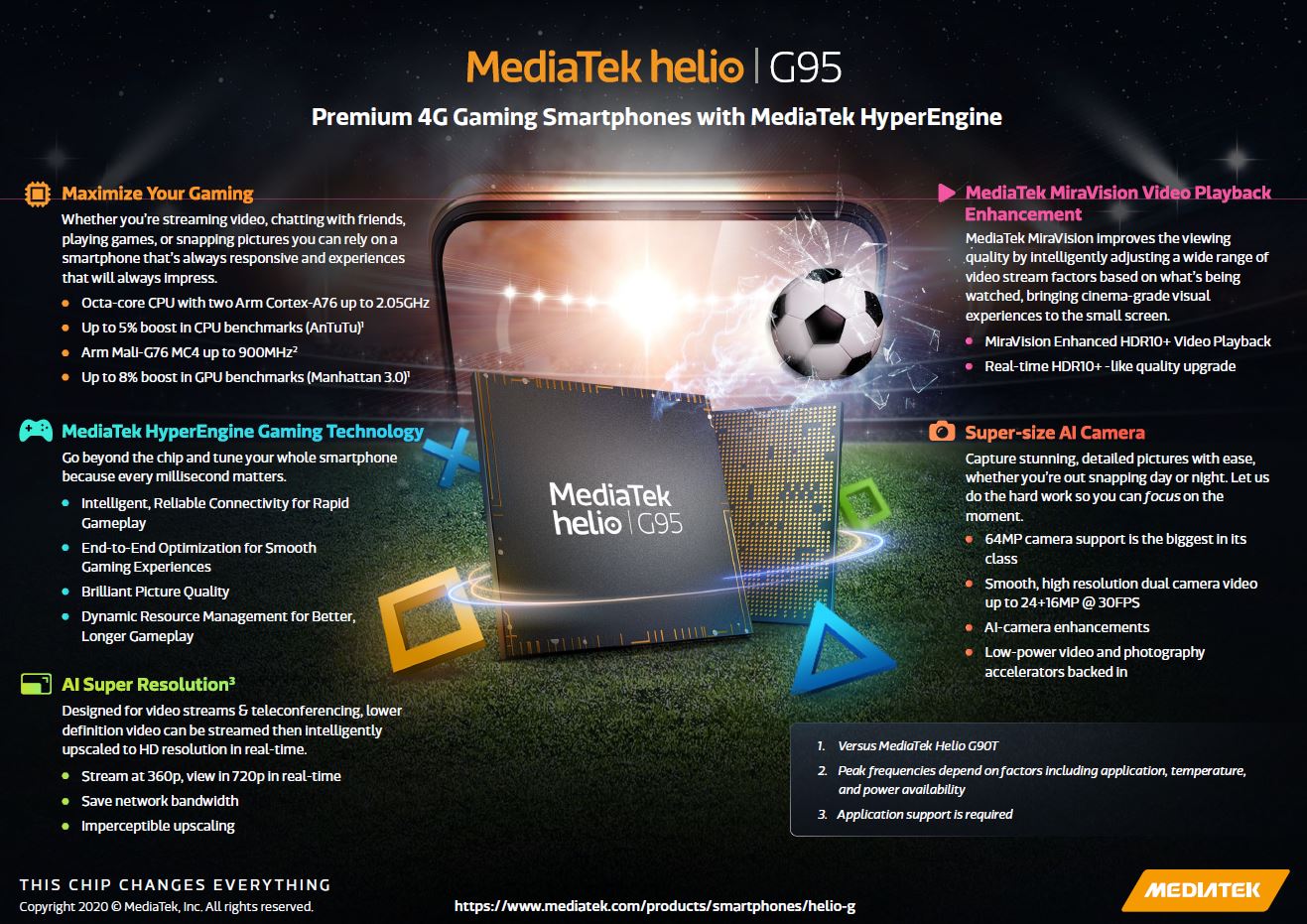MediaTek unveils Helio G95 gaming chipset for affordable premium 4G phones
Offers improved gaming performance

Just a day after Qualcomm announced the gaming-focused Snapdragon 732 SoC for mid-budget range smartphones, MediaTek has unveiled its new Helio G95 chipset with a promise to offer improved gaming performance.
The latest addition to the G series of chipsets, the Helio G95 is the successor to the highly successful Helio G90 and is a 4G capable SoC that supports up to 64-megapixel sensors. It brings features like HyperEngine Game Technology, AI Super Resolution Display, multi-camera support and more.
Though not official yet, this chipset is expected to power the Realme 7 smartphone that is slated to launch later this week. Considering the timing of this announcement from MediaTek, it looks almost certain that the upcoming Realme phone/s will be powered with MediaTek Helio G95 chipset.
- Leaked roadmap reveals upcoming Snapdragon and MediaTek chipsets
- The biggest tech stories of the week
- Upcoming smartphones in India for 2020
Helio G95 specs
The MediaTek Helio is an octa-core processor that comes with a couple of Arm Cortex-A76 CPUs operating up to 2.05GHz coupled with six Cortex-A55 power-efficient CPUs. For graphics and games, there is a Mali-G76 GPU, clocked up to 900 MHz. In comparison to its predecessor, the Helio G95 offers a 5% improved CPU performance and an 8% improvement GPU performance.
Additionally, the chipset offers MediaTek’s HyperEngine Game Technology that is said to improve the gaming experience by offering improved image quality and uses resource management engines for seamless gameplay. MediaTek states that the Helio G95 offers stable connectivity by intelligently using WiFi and LTE connection simultaneously when the WiFi signals are weak.

For hardcore gamers who do not like to be disturbed while playing games, the chipset offers an option to defer calls while playing a game, without a drop in connection.
Since the MediaTek G95 SoC is a mid-range chip and will offer support for 4G connectivity only, it will be powering devices in the mid-budget segment priced around Rs. 20,000 approximately.
Sign up for breaking news, reviews, opinion, top tech deals, and more.
In terms of optics, the chipset boasts support for a quad-camera setup with the primary camera sensor up to 64-megapixel. It will also offer support for real-time portrait bokeh, AI facial detection, 4K videos at 30fps, and an integrated APU for AI-powered camera enhancements.
Last but not the least, this new chipset offers an AI Super Resolution display for video calling and video streaming. It can support maximum FHD+ displays with a 90Hz refresh rate that has become a staple feature for most new-age gaming-focused smartphones.

Jitendra has been working in the Internet Industry for the last 7 years now and has written about a wide range of topics including gadgets, smartphones, reviews, games, software, apps, deep tech, AI, and consumer electronics.